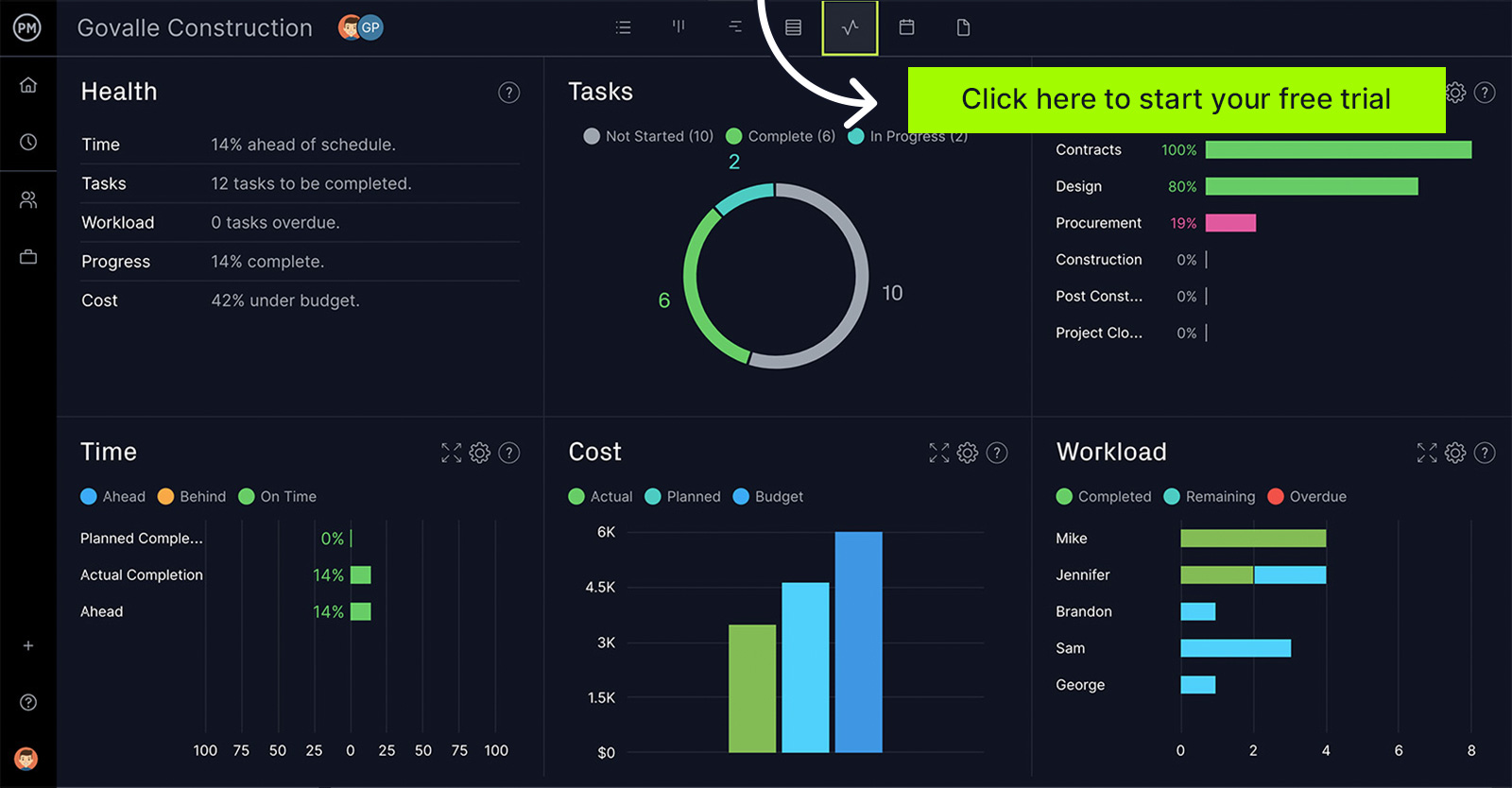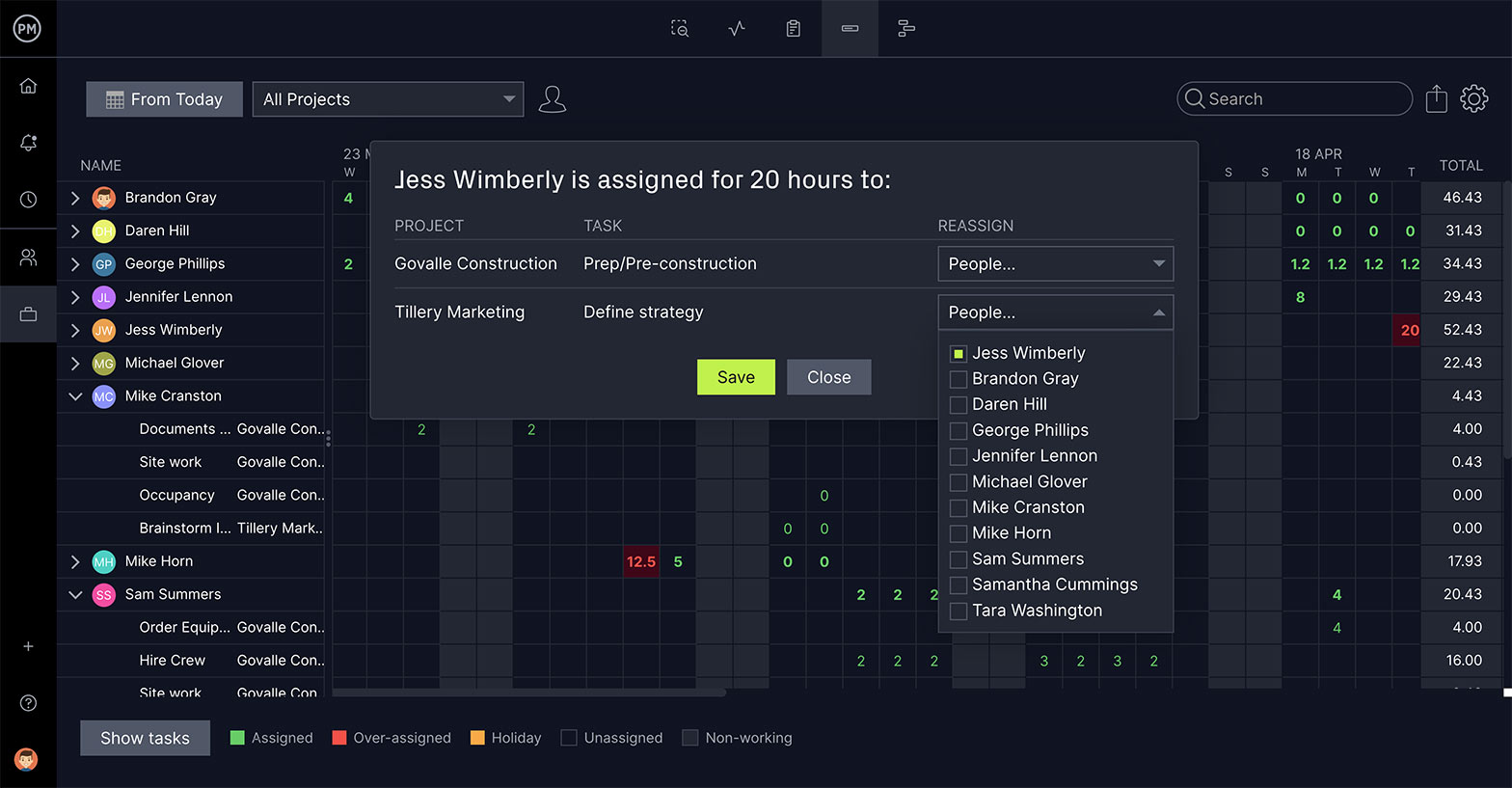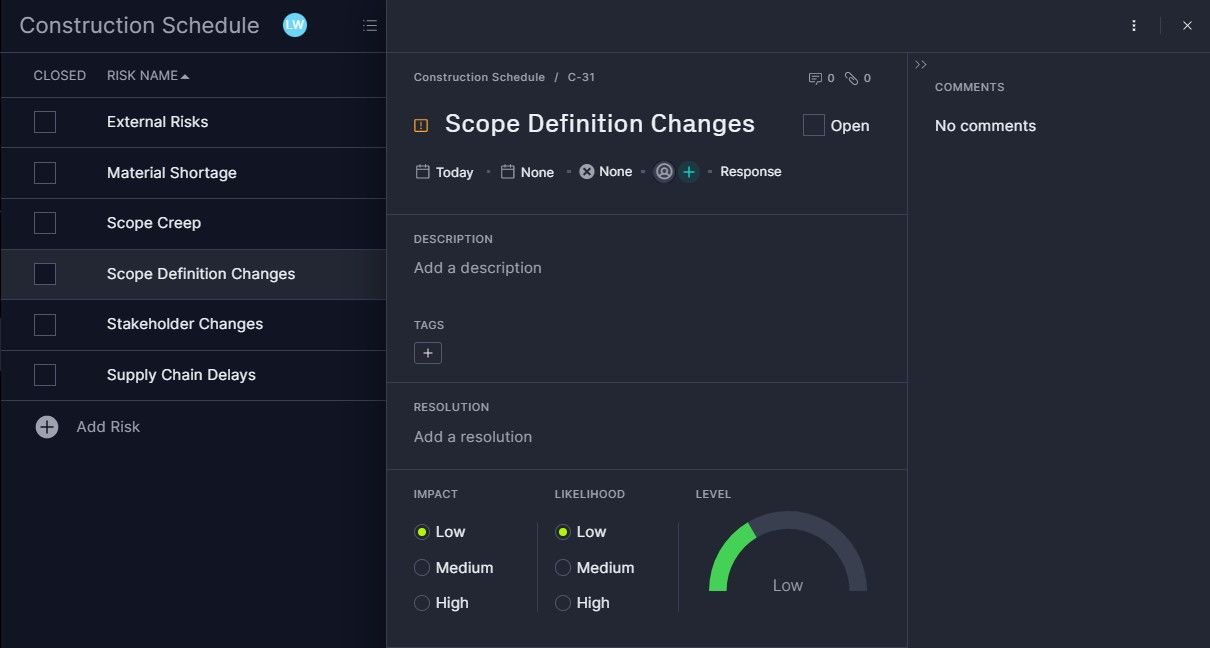When managing a project, there will inevitably be changes or other issues that impact the project. To prevent going off schedule or overspending, project managers are always balancing the project management triangle, which is made up of the three main project constraints.
If you’re unaware of what a project management triangle is or even if you do know, we’ll define it and explain its importance in project management. Then we’ll go into how to manage the project management triangle, what the benefits of it are and if there are other constraints outside of the project management triangle.
What Is the Project Management Triangle?
The project management triangle is used in project management to show the balance of the three main project constraints. Those constraints are scope, time and budget, which each make up one side of the triangle. Whatever in the project impacts those constraints will result in the adjustment of one or two of the others to balance and maintain the quality of the project.
To understand the project management triangle, one must first define the three constraints that make it up. Scope is the tasks that must be completed to deliver a successful project. Time refers to the project schedule, which organizes tasks with start dates and end dates. The budget is the financial investment or the money required to execute the project.
There are different terms to address this project management model, such as the triple constraint and the iron triangle. There is no difference between them other than what they’re referred to. All speak to the need to keep the balance between the three project constraints to deliver the project as expected, on time and within budget.
For example, if the scope of the project changes, the budget or the schedule must adjust to respond to those changes while keeping the project on track. In order to identify changes and make the necessary adjustments requires project management software. ProjectManager is award-winning project management software that gives you the tools to monitor and control your project scope, time and budget. Get a high-level overview of the project whenever you want by toggling over to the real-time dashboard. You get live metrics including time, budget and more. Unlike lightweight software, there’s no time-consuming configuration with our dashboard. It’s ready when you are.

Why Is the Project Management Triangle Important?
The importance of the project management triangle is clear: balancing those three constraints delivers a quality project. Changing just one of the three sides of the project management triangle requires that the other sides are adequately adjusted to maintain a balanced and properly functioning project.
That provides an overview of the importance of the project management triangle, but its benefits are even more far-reaching than that. Tracking these three project constraints makes it easier for a project manager to manage change in a project. That’s because the project management triangle shows the correlation between scope, time and budget and how it relates to quality.
This knowledge makes it easier for project managers to understand what needs to be prioritized to deliver a quality project. The project manager understands that if the schedule can’t be changed, then the scope and budget of the project must be closely monitored. Any changes to these will impact the project schedule.
Stakeholders, clients or project owners will want clarification of any project changes. Using the project management triangle can help them visualize the reason one of the constraints was adjusted to keep the project balanced and the deliverables meeting quality expectations. This allows them to understand how one change to a project constraint impacts the other constraints.
Finally, using the project management triangle helps reduce project risk. From managing change faster and prioritizing to keeping stakeholders informed, all work together to reduce risk in the project. That’s why the project management triangle is such an effective project management tool when planning, executing and monitoring and controlling the project to ensure it’s delivered on time, within budget and meeting quality standards.
How to Manage the Project Management Triangle
There are many ways to manage the project management triangle to deliver a quality project. Some of the approaches depend on the type of project you’re managing, what its priorities are, how risky it is, what resources are at your disposal and so on. Let’s look at a handful of different strategies so you have options when deciding which is best for your project.
Flexible Constraint
Depending on which constraint is most important to your stakeholder or team, review which of the three is the most flexible. This gives you some direction on how to respond if the project requires adjustments to stay on track. For example, you might need a larger team, which allows you more flexibility in the project’s deadline. If the stakeholder wants to add features, then they might need to have some flexibility on the budget.
Define Must-Have Features
Again, you’ll want to meet with your stakeholders and team members to determine all the features expected in the final product. You’ll also need to discern which constraints are most important. Find out from the stakeholders the features they must have and the ones that’d be nice to have but aren’t required for this project if constraints are impacted. Now, you can balance constraints and stakeholder satisfaction.
Make a Risk Management Plan
When creating the project plan, be sure to include a risk management plan to identify risks in the project and, if they occur, what the impact will be. This gives you an idea of which constraints will be affected. Also, include a response to the issue if it shows up and be sure to communicate this not only to the project team but also to the stakeholders so they can be aware of the potential impact on the project and the need to adjust the project management triangle.
Make a Change Management Plan
Another part of the planning phase of your project should be the creation of a change management plan. Change, of course, is expected when managing a project. For the project management triangle to stay balanced and deliver quality changes will occur throughout the project. Having a change management plan in place ensures those changes are controlled. Changes can come from stakeholders, breakdowns in equipment and more, so being prepared will lessen their negative impact.
Are There Any Other Project Constraints Outside of the Project Triangle?
Are there other constraints beyond scope, time and budget? Yes, there’s quality, but the project management triangle exists to deliver quality. Outside of the project triangle, there are two other project constraints: risk and resources.
A project risk is something unexpected that impacts the project, whether for good or bad. If supply costs are lowered or a new technique or technology is introduced over the course of the project, this is a good risk and should be taken advantage of. However, we mostly think of risk as bad, such as scope creep, lack of resources, etc. These risks must be mitigated to reduce their negative impact. Again, a risk management plan is essential to avoid delays or project failure.
A resource is anything you need to execute the project, from your team to raw materials, equipment, etc. Resources cost money, so they’re tied to the project management triangle, especially costs. It’s important to have a resource management plan and proper resource allocation or you’ll find that the project will end up costing more, taking longer and disrupting the project’s scope.

Templates to Manage the Project Management Triangle
Project management software is the best tool for managing the project management triangle, but there are other less effective tools. Project management templates can help you manage your project, including project constraints. ProjectManager has dozens of free project management templates for Excel and Word that can assist you across the life cycle of the project. Here are a few that address managing the three constraints in the project management triangle.
Project Scope Template
Use our free project scope template for Word to outline all the activities, resources, timelines and deliverables of your project. You’ll also have space to define the business objectives, what’s in and out of scope, constraints, assumptions and more.
Project Timeline Template
To address the time constraint in the project management triangle, use our free project timelines template for Excel. On the left is a spreadsheet that captures all your tasks, including the start date and end date. On the right, there’s a visual timeline that automatically populates with the data on the left.
Project Budget Template
In terms of budget, there’s our free project budget template for Excel. It captures the project’s labor and materials costs for each of the project’s tasks. There are even columns that show the budget cost and the actual cost to help track spending.
How ProjectManager Helps You Manage the Project Management Triangle Constraints
While templates are a good start, you hit a wall pretty quickly. They’re just limited—everything must be manually inputted, which takes up valuable time. Project management software isn’t only more efficient, it connects teams in ways that Excel spreadsheets can’t even dream of. ProjectManager is award-winning project management software that helps project managers plan, manage and track the project triangle. Our software has features to manage risks and resources to keep your project management triangle balanced and your project delivering quality.
Identify and Track Project Risk
The project management triangle can also be looked at as a list of potential areas that can impact the project, which is why a risk management plan is essential. Our software lets you create task cards that identify risks and, if they show up as issues in the project, track them until they’re mitigated. The risk card has tags to make them easy to find with our global search. They can be assigned to a team member responsible for dealing with the issue, have detailed directions on how to resolve it and files can be attached if needed.
 Manage Resources and Costs
Manage Resources and Costs
As noted, resource management is also critical to keeping the project management triangle balanced. Our resource management features allow project managers to easily set the availability of their team, including vacation, PTO and even global holidays for distributed teams, which streamlines assignments. Resource costs are managed on the Gantt chart and you can monitor the workload of your team with our color-coded workload chart. If you see a team member is overallocated, reallocate their work right from the workload chart. This keeps teams working at capacity, which avoids burnout and keeps everyone productive.

Of course, when dealing with the project management triangle monitoring is king. The quicker you find a problem, the faster you can resolve it. When you need more details than the dashboard can provide, use our reporting features. It’s easy to generate status reports, portfolio reports and reports on timesheets, variance and more. All reports can be filtered to zoom in on only the data you want to see. They can also be easily shared with stakeholders to keep them updated.
ProjectManager is online project management software that connects teams whether they’re in the office, on a job site or anywhere in between. They can share files, get updates in real time and comment at the task level. Email and in-app notifications keep everyone alerted of changes and updates in the project plan. Join teams at Avis, Nestle and Siemens who use our software to deliver successful projects. Get started with ProjectManager today for free.


